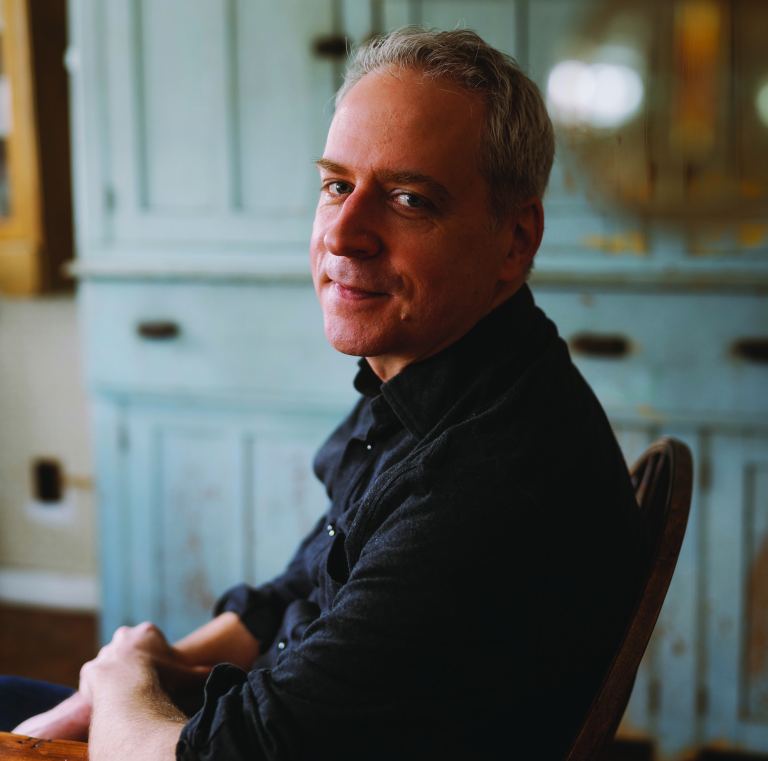A Recital by Jeremy Denk piano

BEETHOVEN: Piano Sonata No. 27 in E minor, op. 90
JOPLIN: Bethena, a concert waltz
GOTTSCHALK: The Banjo, op. 15
SIMONE: Just in Time
WILLIAM BOLCOM: The Poltergeist from Three Ghost Rags
BEETHOVEN: Piano Sonata No. 31 in A-flat major, op. 110
---
IVES: Piano Sonata No. 2, “Concord, Mass., 1840–60”
Winner of a 2013 MacArthur “Genius” Fellowship, the 2014 Avery Fisher Prize, and Musical America’s 2014 Instrumentalist of the Year Award, Jeremy Denk has been hailed by The New York Times as “a pianist you want to hear no matter what he performs, in whatever combination – both for his penetrating intellectual engagement with the music and for the generosity of his playing.”
Two Beethoven sonatas bookend the first half of the program, creating an American sandwich of sorts, with a potpourri of fillings by Joplin, Gottschalk, Simone, and Bolcom. Beethoven’s two-movement Op. 27 sonata is one of contrasts, beginning with agitation and ending in serenity. He dedicated it to his friend, Count von Lichnowsky, who had asked him what the music meant. Beethoven replied that the sonata represented the Count’s love life. He gave the first movement the heading Conflict between head and heart (representing the Count’s angst about marrying a woman who was unacceptable to his family), and the second Conversation with the beloved (the Count’s dream of marital happiness). The two must have had a good laugh over the titles, but Beethoven never published them with the sonata.
The jazz-inspired pieces by American composers will be followed by Beethoven’s penultimate and highly celebrated Sonata No. 31. In this late work, we hear hints of the heroic Beethoven, but also his humanity and vulnerability. The pianist Claudio Arrau called the work “both a Passion and a Pietà.” The last movement blazes out with a triumphant triple fugue.
In Denk’s words, “the ‘Concord’ Sonata, written over several years, represents Ives’s attempt to synthesize all his thinking—about music, art, and life—in a single vast statement. When it was first printed, in 1920, Ives also wrote a 30,000-word essay, in which he explained that the piece was an “impression of the spirit of transcendentalism that is associated in the minds of many with Concord, Mass., of over a half century ago.” The sonata is in four movements—“impressionistic pictures of Emerson and Thoreau, a sketch of the Alcotts, and a Scherzo supposed to reflect a lighter quality which is often found in the fantastic side of Hawthorne. It is full of polytonal, polyrhythmic mayhem and mashup: cacophonous marching bands, simple parlor tunes meant to represent Beth Alcott playing the family’s spinet, and, throughout, myriad quotations of the famous opening notes of Beethoven’s Fifth -a work that obsessed Ives. The effect is not just modern but actually postmodern: the piece is an iPod shuffle with a mind of its own. And from it emerges a paradox: as forward-looking as Ives was in his techniques, his music evokes a tender nostalgia for the America of the second half of the nineteenth century. The ‘Concord’ re-creates this vanished world before our ears.” South Florida Classical Review hailed Denk’s performance of the piece as “a staggering tour de force” which convinced many in the audience that they were “hearing a true masterpiece.”
Experience the brilliant artistry of the one the world’s most insightful and innovative pianists!